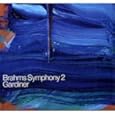
Of all the movements in classical music over the past 35 years, the period instrument movement was one of the most controversial. Not only did it force listeners to confront the possibility that the performance styles they had grown up with were invalid, but it also forced listeners to hear so-called historically valid performances which were painfully short on technical merit. We all recall the strange timbres of historical instruments and the unreliable intonation of the instruments and the players. Not only that, but we began to hear some of our favorite music played at speeds which were contrary to modern convention – sometimes slower, but more often faster than we could comfortably accept.
Throughout the emergence of these historically informed performances there were numerous mistakes and mis-steps. Sometimes the academicians who were doing the historical grunt work were not the best at actually showing us how the music should sound. Performance technique was still well behind the playing by musicians who used modern instruments. Listeners fell into two camps which rarely shared company in the concert hall. Proponents of period instrument performance could often not be dragged in to hear a modern symphony orchestra, especially if they were playing Bach or Handel. On the reverse face of the coin, those who preferred their Bach conducted by Herbert von Karajan would only deride those ensembles such as Collegium Aureum which valiantly labored on in search of performances which would sound as though they came from Bach’s hand.
Over the years a new performer began to emerge, one who studied and tamed the early instruments. Concurrently, instrument makers began to copy old instruments, so called period instruments, working from an historical intention but with modern workshops in which to build their authentic instruments. As these two factors came together, ensembles such as Concerto Koln, Concentus Musicus and the English Baroque Soloists rose as cream to the top and began to show the true possibilities for playing and hearing old music in new ways.

John Eliot Gardiner entered the scene in 1964 when he formed the Monteverdi Choir. The Monteverdi Orchestra, an ensemble which played modern instruments, followed. In these early years, Gardiner’s approach was one which has emerged in the 21st century as a valid compromise to going completely historic in performance approach. Gardiner and his musicians played in a style which was informed by study of early performance practice. Their reasoning was that performance thus rooted would honor more closely the intentions of the composer. This resulted in performances like those found in Gardiner’s recording of Claudio Monteverdi’s Vespers of 1610.
At this point, Gardiner was on the verge of retooling his Monteverdi Orchestra into the period instrument ensemble The English Baroque Soloists. With this move, in 1977, Gardiner and his musicians became major players in the still struggling period instrument movement. Although Gardiner’s reputation is still rooted, somewhat in a misinformed manner, in the Baroque and earlier, i.e. Bach, Handel and Monteverdi, he startled us all in 1990 with the formation of his Romantic and Revolutionary Orchestra, a period instrument ensemble meant to play Beethoven, Schumann and, most recently, Brahms.
Gardiner’s talent allows him to move freely from period instrument performance to modern instrument performance. He has a musician’s heart which makes engaging music wherever he might be conducting, whether it be with the Vienna Philharmonic or, more recently, playing Brahms Symphonies with his Orchestre Révolutionnaire et Romantique. With the Brahms, Gardiner is opening a bold, new arena which is sure to stir both the fans of performances on authentic instruments and those who believe Karajan, Bohm, Solti and others got it right with a modern orchestra.
Gardiner’s new Brahms, there are now two volumes released, including the First and Second Symphonies, is about more than just the sound of the late-19th Century orchestra. The new recordings include examples of Brahms’ choral music with orchestra, underpinning Gardiner’s intellectual and musical argument that these are important bridges into Brahms’ purely orchestral writing. He presents the evidence in a convincing manner, but also in entertaining interpretations. These are performances which come from the collective hearts and souls of Gardiner’s committed musicians and even if they don’t sway the reluctant listener to the ways of period instrument performance, they will entertain and engage. The tempi are perhaps a bit faster than you will be accustomed to, but give them a chance and they won’t disappoint those seeking well-interpreted Brahms. Within moments there are “aha” phrases and musical gestures which will focus your attention on what Gardiner is about. Yes, the historically valid instruments do lend a transparency to the orchestral timbre, but Gardiner and his musicians also show us other ways of approaching Brahms at a number of different interpretive levels, and this is why you might want to put these recordings onto your music player and spend some time with them. The playing is of the first rank. There are few technical limitations which will distract the listener from Brahms’ great symphonic vision. If you like Brahms, you will not come away disappointed. If you don’t like Brahms (and I accept there may be a few of you out there), listen with an open mind and the freshness of these performances just might show you the possibilities.

The entire cycle of Brahms Symphonies has now been recorded. I don’t know the release schedule, but notable is the fact that these are being produced for and marketed by Gardiner’s own label Soli Deo Gloria. This is worth supporting! Recordings are available through amazon.com and also by download from eMusic.com.
No comments:
Post a Comment